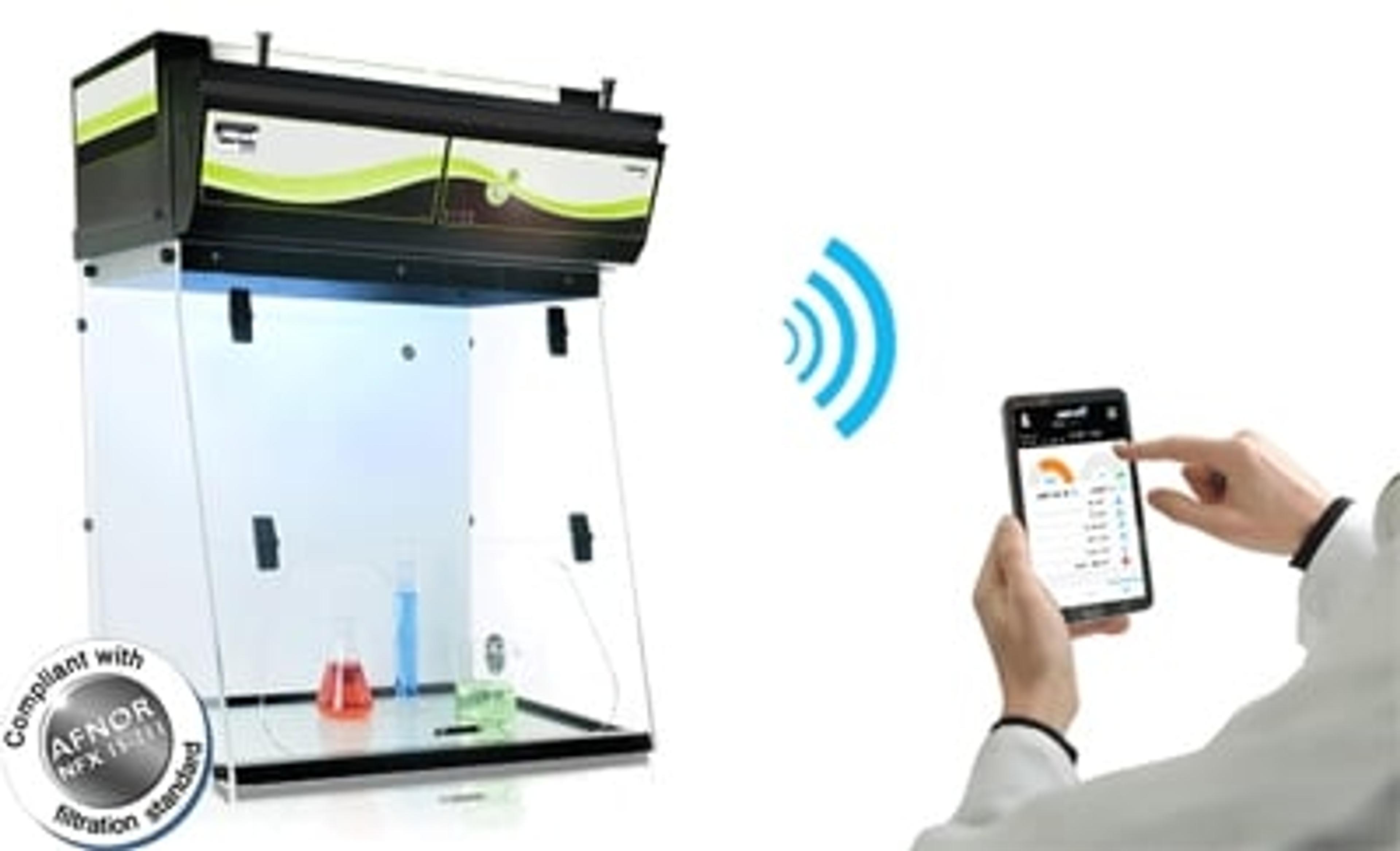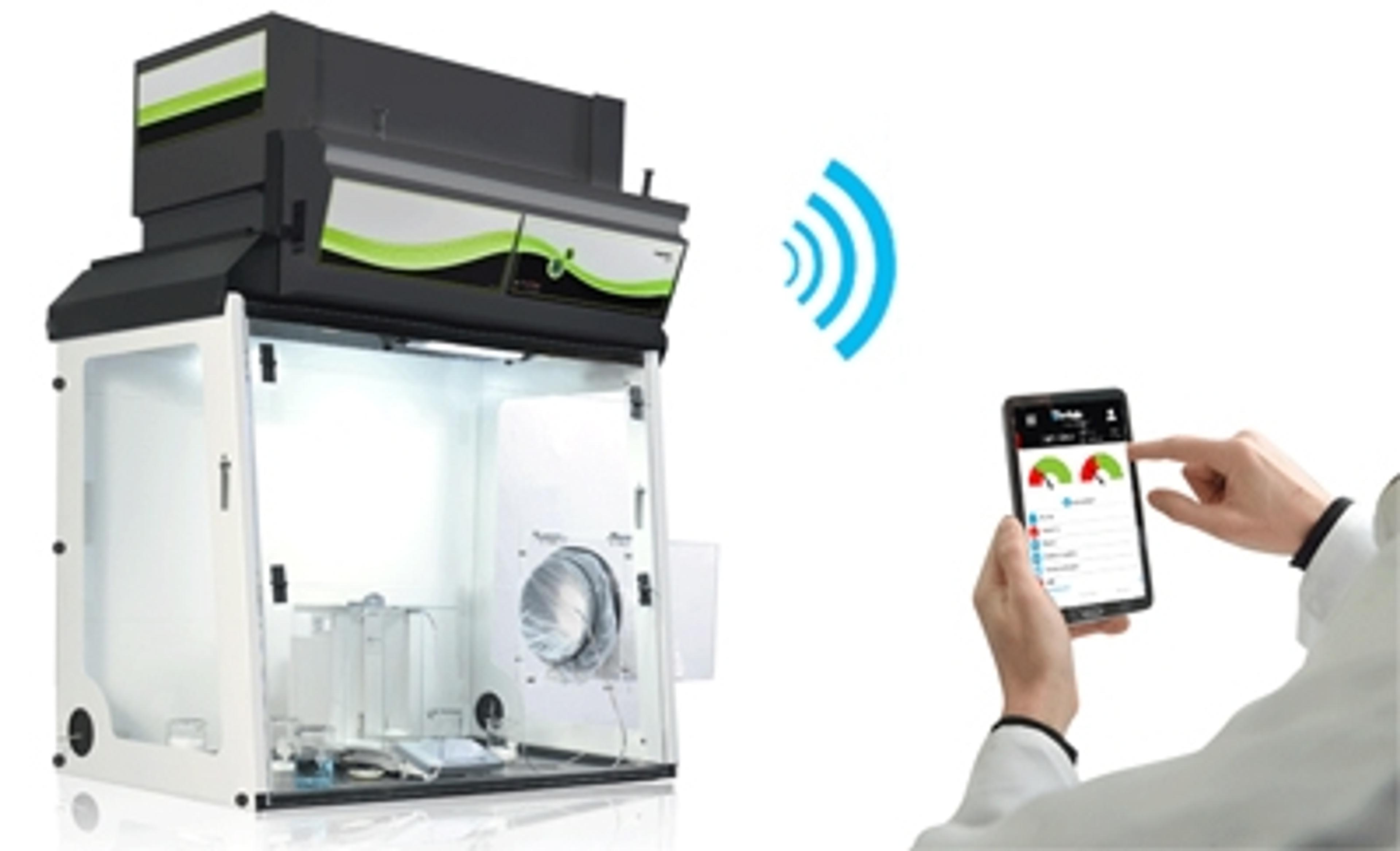Precision Powder Weighing in Fume Hoods: Top Tips For Accurate Results
Have you considered all the factors affecting the accuracy and reliability of your weighing processes using a semi-micro balance?
21 Nov 2018

Considering how common weighing processes are in nearly every laboratory, you may not realize the number of factors that could be influencing your results. In this webinar, Cédric Herry, director of research and development at Erlab, and Szymon Holubowicz, senior market manager at Ohaus Europe, deliver important insights on how to achieve fast, accurate and safe results when weighing powders using a semi-micro balance within a filtered fume hood.
In this article, we present highlights from the presentation, discuss some of factors that can affect the precision of your balance (especially in a filtered fume hood) and focus on your questions on the accurate and safe use of a semi-micro balance.
On the level
When thinking about getting your equipment level, you may think that this refers mostly to balances, but it’s also important to make sure that your fume hood is level too. With respect to balances, each one has a part inside it known as a load cell. This may be the most important element of a weighing device. The load cell is fixed to the housing of the balance and has a working position which should be maintained. Leveling a balance allows you to make sure that the load cell is in the perfect working position that delivers proper results. If the balance is not leveled correctly, it means that even if it calibrates it later on, it might affect the accuracy of your results. That's why leveling the balance is so important for accurate results.
Calibration station
Thinking about calibration of your balance, how often you need to do this depends on the quality management system that is in place at your workplace. It might be that operation instructions ask you to calibrate the balance daily or it might be that once a week is enough, but any balance that comes with an internal calibration system from Ohaus will ask you to do the calibration whenever the temperature changes. So, the balance will ask you to calibrate depending on the temperature in the weighing room. That can occur every three minutes if the temperature changes frequently. The Ohaus system requires the calibration to be performed at least every 11 hours, simply to make sure that the balance is calibrated correctly.
Temperature and other environmental conditions can also affect the performance of your balance. With respect to the operating temperatures, in each data sheet or manual for a balance, there's always an operating temperature range indicated. For Ohaus balances it's usually 5-30°C or 10-30°C, depending on the balance model. Most laboratories have adequate air conditioning systems or climate control inside the building, so the temperature is usually constant. Even if external temperature is around 28-30°C, as long as the environment is at a constant level, then the balance will calibrate according to this temperature, humidity or other environmental conditions present. If these factors are controlled, then there is a really high possibility that your weighing results are going to be repeatable, accurate, and reliable.
It could be that the weighing pan is not installed correctly, that there is some overload, underload problem...
Szymon Holubowicz Ohaus Europe
Not all errors are created equal
When things do go wrong, how can you deal with them? If it's an Ohaus balance, then in the manual there's always a list of potential errors that can help diagnose the problem with the balance. Holubowicz explains that, "if the balance is showing an error on the screen, you will not be able to operate it or perform a calibration. So, first of all, to perform calibration you need to have zero on the display, otherwise, I'm afraid that not much can be done with this balance. If it is an Ohaus balance and if it's showing an error on the screen, the best way to find a solution to that is simply to call our technical service support. So, I strongly advise to go to our website and simply give a call to our guys."

As well as an accurate balance, a suitable filtered fume hood is vital in providing a high level of safety when working with biohazardous or toxic compounds and when attempting to prevent contamination. We ask the speakers your questions on the principles, standards and safety parameters surrounding fume hood use.
How do you determine the face velocity of a fume hood?
CH: For some applicable standards there is a required minimum face velocity for a filtered fume hood, such as in the NFX 15-211. The minimum face velocity is 0.4 meters per second, and now modern filter fume hoods, equipped with face velocity sensors or air flow sensors, ensure that the face velocity is always above this value. There is clearly a challenge because when you talk about balances, for safety, you've got to ensure a minimum face velocity, but if the face velocity is too high, you may compromise the accuracy of the balance. That's the reason why Erlab filtered fume hoods are, for waking application, between 0.4 and 0.45 meters per second and the fans are controlled in order to ensure that you're always between these two values.
Have you got any advice that could help keep the balance as steady as possible in the fume hood?
CH: First of all, when you use a balance in the fume hood, the first thing is to check is if the balance is correctly configured. There are different weighing modes on balances, and the first thing to do when you weigh under fume hood is to set your balance in a mode that takes into account that there is an airflow or a possible turbulence. What I can say based on my experience is that most of the time, these kinds of problem are observed not with the most sensitive balances but with the largest balances with larger weighing plates. Larger weighing plates are not protected by the weighing cage around the balance.
When the fume hood is on, how can you control any excess vibration?
CH: Normally, if the fume hood is correctly set, there is no vibration, so it depends on the fume hood design. Each manufacturer has got their own recipe for that, but the kind of fans we use at Erlab are local, well-controlled fans that are very well equilibrated. Some of them are manufactured in Germany and normally there is no vibration. So, there is no need to make a very stringent measurement. If there is vibration, you will see directly on the screen of your balance.
Considering technical requirements, could you explain how to correctly fit a balance within a fume hood, and if there's anything we need to consider when doing that?
SH: With our (Ohaus) Explorer balance, we have designed it in a way that actually meets a lot of requirements to be placed in a fume hood. First of all, this balance is modular, so you can detach the display and put it outside of the fume hood so that you have just the base inside. There are also Tesla sensors with which you can control the doors. That helps to minimize the amount of vibration passed to the base, but also it helps with minimizing cross-contamination of the sample because you're not even touching the balance when performing weighing. Also, you can control the balance with those sensors, so, for instance, you can use a balance which is equipped with an automatic door and use the sensors to open and close them.
It's best to have one hood, one balance
Cédric Herry Erlab
CH: Firstly, I would like to focus on the fact that the front face of the balance should be at least 15 centimeters from the front face of the hood. It’s very important to manage the space between the front door of the hood and the balance, and also, with the back of the balance and the rear wall of the fume hood, you need to have space all around.
Concerning the airflow, it's also very important to center the balance in the fume hood. I highly recommend avoiding having two balances in the same fume hood or two applications in the same fume hood. If you use a big fume hood with, for example, two balances and two people working together, there is a big risk that one will affect the other — that's something very, very common.
And one last thing, never underestimate the need to access the balance from the top of the balance — that's also something very important.
Want to find out more? Catch the webinar on demand today:


